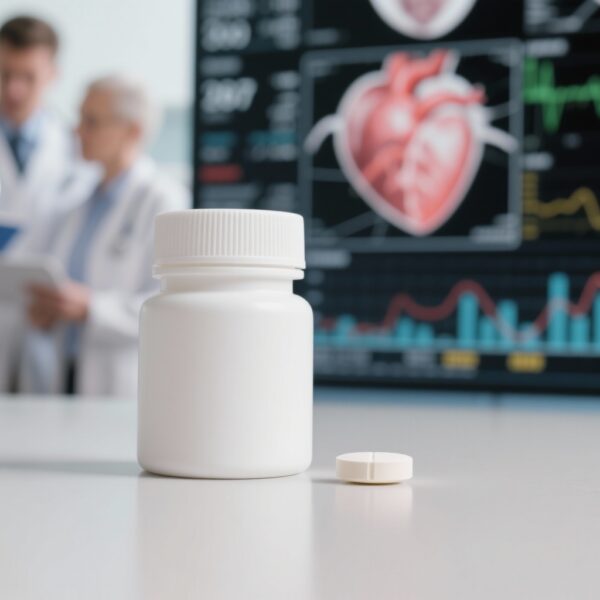Highlights
– A 12‑week program of home‑delivered, DASH‑patterned groceries plus dietitian counseling reduced office systolic BP by a mean 3.4 mm Hg compared with comparable cash stipends in Black residents of Boston.
– Secondary benefits included a reduction in diastolic BP, 24‑hour urine sodium, and LDL cholesterol; there were no changes in BMI or hemoglobin A1c.
– Benefits attenuated within three months after the program ended, highlighting sustainability challenges for food‑based interventions.
Background
High blood pressure (BP) remains a leading contributor to cardiovascular morbidity and mortality globally. Dietary modification is a cornerstone of BP prevention and management. The Dietary Approaches to Stop Hypertension (DASH) pattern—rich in fruits, vegetables, whole grains, lean proteins, and low‑fat dairy, and reduced in saturated fat and sodium—has demonstrated robust BP lowering in tightly controlled feeding trials, including participants from diverse racial and ethnic groups.
However, translating experimental dietary interventions into community settings is challenging. Structural barriers—limited access to affordable healthy foods, retail deserts in urban neighborhoods, and competing financial pressures—may prevent uptake of healthful diets. Interventions that supply foods directly to households or offset food costs are pragmatic strategies to reduce these barriers, but rigorous randomized evidence on BP and cardiometabolic outcomes in communities with limited grocery access has been limited.
Study design
The Groceries for Black Residents of Boston to Stop Hypertension (GoFresh) trial was a parallel‑group randomized clinical trial (ClinicalTrials.gov Identifier: NCT05121337) conducted in Boston from August 2022 to September 2025. The trial enrolled 180 self‑identified Black adults (mean age 46 years; 56.7% female) living in urban communities with few grocery stores, with untreated systolic BP 120 to <150 mm Hg and diastolic BP <100 mm Hg.
Participants were randomized to one of two 12‑week interventions:
- Home‑delivered, DASH‑patterned groceries ordered weekly plus dietitian counseling. The program emphasized a low‑sodium DASH pattern but did not highlight cost savings to participants.
- Three cash stipends of $500 delivered every 4 weeks intended for self‑directed grocery shopping (active comparator designed to offset food costs without structured provision or counseling).
The primary outcome was the between‑group difference in the change from baseline to 3 months in model‑estimated office systolic BP (averaged from three measurements across at least two visits). Adherence was assessed by 24‑hour urine collections. Secondary outcomes included diastolic BP, body mass index (BMI), hemoglobin A1c, and low‑density lipoprotein (LDL) cholesterol. Outcomes were reassessed three months after the intervention ended to evaluate maintenance of effects.
Key findings
Of 180 randomized participants, 175 (97.2%) completed the primary outcome assessment. Baseline mean systolic BP was 130.0 (SD 6.7) mm Hg and diastolic BP 79.8 (SD 8.1) mm Hg.
At 3 months, the DASH‑patterned groceries group experienced a mean systolic BP change of −5.7 mm Hg (95% CI, −7.4 to −3.9 mm Hg), while the self‑directed stipend group showed a change of −2.3 mm Hg (95% CI, −4.1 to −0.4 mm Hg). The between‑group difference in change was −3.4 mm Hg (95% CI, −5.9 to −0.8 mm Hg; P = .009), favoring the DASH‑groceries strategy.
Secondary outcomes at 3 months also favored the structured grocery intervention: mean diastolic BP decreased an additional −2.4 mm Hg (95% CI, −4.2 to −0.5 mm Hg), 24‑hour urine sodium decreased by −545 mg/24 h (95% CI, −1041 to −50 mg/24 h), and LDL cholesterol fell by −8.0 mg/dL (95% CI, −13.7 to −2.3 mg/dL) compared with the stipend group. No significant differences were observed in BMI or hemoglobin A1c.
Importantly, effects were not maintained when reassessed 3 months after the end of the intervention (i.e., 6 months after randomization): the BP and LDL advantages had attenuated, suggesting that benefits depended on continued access to the delivered foods and counseling.
Clinical significance and contextualizing the effect size
A between‑group systolic BP difference of ~3.4 mm Hg is modest at the individual level but clinically meaningful at the population level; even small average reductions in systolic BP across a community translate into lower incidence of stroke and myocardial infarction. The LDL reduction (~8 mg/dL) aligns with plausible dietary shifts (reduced saturated fat, increased plant foods) and adds a potential atheroprotective benefit beyond BP lowering.
Expert commentary and interpretation
The GoFresh trial provides rigorous randomized evidence that a packaged “food‑as‑medicine” intervention—home delivery of nutritious, low‑sodium groceries coupled with dietitian counseling—can improve BP and lipid markers beyond what comparable monetary support alone achieves in an urban, predominantly Black population residing in areas with limited grocery access.
Mechanistically, the observed BP reduction plausibly reflects multiple converging effects: lower sodium intake (supported by reduced 24‑hour urine sodium), increased potassium and fiber from fruits and vegetables, and improved overall dietary quality. LDL changes likely reflect reduced intake of saturated fats and increased consumption of whole grains, legumes and unsaturated fats.
The lack of weight or HbA1c changes suggests the intervention modified diet quality rather than energy balance or glycemic control over 12 weeks; longer programs or adjunctive behavioral interventions may be necessary to influence weight and diabetes risk markers.
Limitations
- Generalisability: The trial enrolled Black adults from urban neighborhoods with limited grocery access in a single US city, which strengthens relevance to similar communities but may limit extrapolation to other populations or rural settings.
- Duration and sustainability: Benefits dissipated after the intervention stopped. The study was not designed to test long‑term maintenance strategies or cost‑effectiveness of ongoing grocery delivery programs.
- Comparator choice: The stipend control was an active comparator intended to offset food costs; however, differences in how funds are spent and the absence of structured counseling in the stipend arm may partially account for the effect size.
- Medication status: Participants were untreated for hypertension at baseline, so results may not directly apply to patients on antihypertensive therapy or with more severe hypertension.
Implications for clinical practice and policy
GoFresh demonstrates that structural interventions addressing food access can produce measurable cardiometabolic benefits beyond cash assistance alone. For clinicians and health systems, these findings support integrating food access strategies—prescription groceries, medically tailored meals, and dietitian support—into preventive care models for populations facing food insecurity.
From a policy perspective, results highlight two priorities: (1) scaling and funding sustained food access programs (for example through Medicaid waivers, community health partnerships, or charitable models) if durable health gains are the goal; and (2) embedding dietary counseling alongside food provision to maximize benefit.
Future research directions
Key unanswered questions include optimal program duration and intensity, cost‑effectiveness analyses, strategies to sustain dietary changes after program cessation (e.g., skills training, grocery vouchers, community partnerships), and effects among patients with established hypertension or on antihypertensive therapy. Trials in diverse geographic and socioeconomic settings are also needed.
Conclusion
The GoFresh randomized clinical trial provides compelling evidence that a time‑limited program of home‑delivered, DASH‑patterned groceries plus dietitian counseling lowers systolic and diastolic BP and reduces LDL cholesterol in Black urban adults facing limited food access, compared with comparable financial assistance. However, benefits waned after the intervention ended, underlining the importance of sustainability considerations in designing food‑based public health interventions.
Funding and trial registration
Trial registration: ClinicalTrials.gov Identifier: NCT05121337.
Funding and detailed disclosures are reported in the original JAMA publication of the GoFresh trial (see reference below).
References
1. Juraschek SP, Col H, Ferro K, et al; GoFresh Collaborative Research Group. DASH‑Patterned Groceries and Effects on Blood Pressure: The GoFresh Randomized Clinical Trial. JAMA. 2025 Nov 9. doi:10.1001/jama.2025.21112. Epub ahead of print. PMID: 41206973.
2. Appel LJ, Moore TJ, Obarzanek E, et al. A Clinical Trial of the Effects of Dietary Patterns on Blood Pressure. N Engl J Med. 1997;336(16):1117‑1124.
3. Sacks FM, Svetkey LP, Vollmer WM, et al. Effects on Blood Pressure of Reduced Dietary Sodium and the Dietary Approaches to Stop Hypertension (DASH) Diet. N Engl J Med. 2001;344(1):3‑10.
4. Whelton PK, Carey RM, Aronow WS, et al. 2017 ACC/AHA/AAPA/ABC/ACPM/AGS/APhA/ASH/ASPC/NMA/PCNA Guideline for the Prevention, Detection, Evaluation, and Management of High Blood Pressure in Adults. Hypertension. 2018;71(6):e13‑e115.



